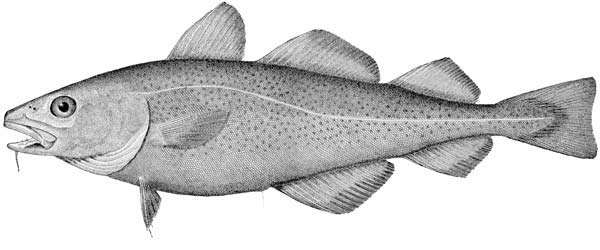European Migratory Fishery
The first Europeans to frequent the northeastern region of North America were not settlers, but fishers. Newfoundland with its adjacent waters was originally viewed as a cod fishery, a useful and increasingly important supplement to fisheries carried on in European waters.

From the early 16th century, fishing ships sailed to Newfoundland from France, Spain and Portugal each spring, returning in the fall with their catch of salted codfish. The island, with southern Labrador where Spanish Basques caught whales, was an extension of Europe, a fishing station.
Late in the 16th century the Iberian fisheries at Newfoundland declined. Their place was taken by ships from the southwestern counties of England. As a result, the 17th century Newfoundland fishery came to be divided between France and England. The fisheries were economically important to both countries, and they were also thought to be a vital component of national strength because they trained seamen. As an English merchant put it in 1623:
A brave desseigne it is, as Royall as Reall; as honourable as profitable. It promiseth renowne to the king, revenue to the Crowne, treasure to the kingdom, a purchase for the land, a prize foe the sea, ships for navigation, navigation for ships, mariners for both, entertainment of the rich, employment for the poore, advantage for adventurers, and encrease of trade to all the subjects.
(Edward Misselden, The Circle of Commerce, 1623)
Control of the Newfoundland fisheries was therefore an issue in the wars between Britain and France which began in the late 17th century. The result was a formal division of the fishery. Britain assumed sovereignty over the island in 1713, and by 1763 over all Acadia, Cape Breton and Canada, together with their fisheries. France retained the right to fish in season on the so-called French Shore, and was ceded the nearby islands of St. Pierre and Miquelon as a base for fishing on the banks.
Englishmen dominated the Newfoundland fishery during the 18th century. Migratory fishing ships still sailed back and forth, but increasingly merchants purchased fish from resident planters, settlers who had made Newfoundland their home, and sold them goods in return. Warfare stimulated this trend until, by the end of the Anglo-French wars in 1815, the fishery was almost totally in the hands of Newfoundland settlers. The English migratory fishery had disappeared in the face of the colonial society it had created. The French migratory fishery, however, continued into the 20th century.




